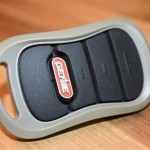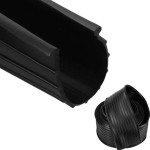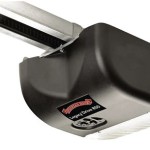Heavy Duty Shelving Units for Garage Organization
The garage, often relegated to a repository for items that lack a designated space elsewhere, can quickly become a cluttered and inefficient area. From tools and automotive supplies to seasonal decorations and sporting equipment, the sheer volume and variety of stored items necessitate a robust and organized storage system. Heavy-duty shelving units provide a durable and customizable solution for maximizing garage space, improving accessibility, and enhancing overall organization.
The selection of appropriate heavy-duty shelving units demands careful consideration of several factors. Load capacity, material composition, dimensions, and adjustability all play crucial roles in ensuring the shelves meet the specific demands of the garage environment and the stored items. Ignoring these factors can lead to structural failure, safety hazards, and ultimately, a less functional and more disorganized space.
This article aims to provide a comprehensive overview of heavy-duty shelving units specifically designed for garage use. It will delve into key considerations for selecting the right shelving, explore various material options, and offer practical tips for installation and maintenance. Understanding these elements will empower individuals to make informed decisions and create an organized and efficient garage storage system tailored to their specific needs.
Understanding Load Capacity and Shelf Material
The load capacity of a shelving unit is arguably the most critical factor to consider when choosing heavy-duty garage shelving. Load capacity refers to the maximum weight a shelf can safely support without compromising its structural integrity. Exceeding this limit can lead to bending, warping, or even complete collapse of the shelving unit, posing significant safety risks and potentially damaging stored items. Therefore, accurately estimating the weight of items to be stored is paramount.
Manufacturers typically specify the load capacity in pounds per shelf or pounds per unit. It's essential to carefully examine these specifications and factor in a safety margin to account for potential overloading or uneven weight distribution. For example, if a shelf is rated for 500 pounds, it's prudent to avoid consistently loading it with 500 pounds, instead aiming for a lower weight to ensure long-term stability and prevent premature wear and tear.
Several materials are commonly used in the construction of heavy-duty garage shelving, each offering distinct advantages and disadvantages in terms of strength, durability, and cost. The two most prevalent materials are steel and industrial-grade plastic. Steel shelving, particularly that made with heavy-gauge steel, provides exceptional strength and load-bearing capacity. Steel is resistant to bending and warping under heavy loads, making it ideal for storing tools, automotive parts, and other heavy items. However, steel shelving can be susceptible to rust and corrosion, especially in humid environments. Powder coating or galvanization can help mitigate this risk and extend the lifespan of the shelving unit.
Industrial-grade plastic shelving offers a lighter weight alternative to steel, while still providing sufficient strength for many garage storage needs. Plastic shelving is inherently resistant to rust and corrosion, making it well-suited for damp or humid environments. Furthermore, plastic shelving is often easier to assemble and move than steel shelving. However, plastic shelving typically has a lower load capacity than steel shelving and may be more susceptible to cracking or deformation under extreme weight or impact. It is important to choose high-quality, industrial-grade plastic for durability and longevity.
Beyond steel and plastic, other materials such as wood and wire are sometimes used in garage shelving. Wood shelving, particularly solid hardwood or plywood, can provide a visually appealing and sturdy storage solution. However, wood is susceptible to moisture damage and insect infestation, making it less suitable for garages that are not climate-controlled. Wire shelving offers good ventilation and is relatively inexpensive, but it may not be suitable for storing small items that could fall through the gaps between the wires.
Assessing Dimensions and Adjustability
The dimensions of the shelving units are another crucial consideration. Garage space is often limited, and maximizing storage capacity requires careful planning and selection of shelving units that fit the available footprint. Before purchasing any shelving, accurately measure the height, width, and depth of the space where the shelves will be installed. Consider any obstructions, such as pipes, electrical outlets, or garage door tracks, that may limit the placement of the shelving.
The height of the shelving units should be sufficient to accommodate the tallest items to be stored, while also allowing for easy access to the upper shelves. The width of the shelving units will determine the total storage capacity and the number of items that can be placed side-by-side. The depth of the shelving units should be adequate to support the largest items without protruding excessively into the garage space.
Adjustability is a key feature to look for in heavy-duty garage shelving. Adjustable shelves allow for customization of the spacing between shelves, accommodating items of varying heights and sizes. This versatility ensures that the shelving unit can be adapted to changing storage needs over time. Shelving units with adjustable shelves typically feature slots or holes along the vertical supports, allowing the shelves to be easily repositioned.
The adjustability range is an important consideration. Some shelving units offer closely spaced adjustment options, allowing for precise customization of shelf heights. Others offer wider spacing, which may be sufficient for many storage needs but may not provide the same level of fine-tuning. It is generally advisable to choose shelving units with a greater adjustability range, as this provides greater flexibility and adaptability.
Besides vertical adjustability, some shelving units also offer the option to adjust the shelves horizontally, allowing for the creation of wider or narrower storage bays. This feature can be particularly useful for storing long or bulky items, such as lumber, pipes, or sporting equipment. The ability to adjust the shelves horizontally can also help to optimize the use of available space and create a more efficient storage layout.
Installation and Maintenance Considerations
Proper installation is paramount to the safety and stability of heavy-duty garage shelving. Failing to install the shelving correctly can lead to structural weaknesses and potential hazards. Most shelving units come with detailed assembly instructions, which should be carefully followed. It is often recommended to have a second person assist with the installation, particularly for larger and heavier shelving units.
Before starting the installation, ensure that the floor is level and free of any obstructions. If the floor is uneven, shims can be used to level the shelving units. It is also important to determine the location of wall studs, particularly if the shelving units are designed to be anchored to the wall. Wall anchors provide additional stability and prevent the shelving units from tipping over, especially when loaded with heavy items.
The type of wall anchor used will depend on the wall construction. For drywall walls, use drywall anchors that are rated for the weight of the shelving unit and the stored items. For concrete or masonry walls, use concrete anchors or masonry screws. It is important to follow the manufacturer's instructions for installing the wall anchors and to use the correct size drill bit. When anchoring to studs, use screws long enough to penetrate deeply into the wood. Using nails is not recommended due to their weaker holding power.
Regular maintenance is essential to ensure the longevity and safety of heavy-duty garage shelving. Periodically inspect the shelving units for any signs of damage, such as bending, warping, or rust. Tighten any loose bolts or screws and replace any damaged parts. Clean the shelving units regularly to remove dust, dirt, and debris. Use a mild detergent and water to clean the shelves, and avoid using abrasive cleaners that could damage the finish.
For steel shelving, apply a rust inhibitor or protective coating periodically to prevent rust and corrosion. For plastic shelving, avoid exposing the shelves to direct sunlight for extended periods, as this can cause the plastic to degrade and become brittle. Regularly reorganize the stored items to ensure that the weight is evenly distributed across the shelves. Avoid overloading the shelves or placing heavy items on the upper shelves, as this can increase the risk of tipping over.
By following these installation and maintenance guidelines, individuals can ensure that their heavy-duty garage shelving remains safe, stable, and functional for years to come. A well-maintained shelving system will contribute to a more organized and efficient garage space, making it easier to find and access stored items.

6 Tier Metal Garage Shelf 55 W X 84 H Adjustable Heavy Duty 3500lbs Black Walmart Business Supplies

Gladiator 90 X Heavy Duty Mega Rack With Four Adjustable Shelves

Muscle Rack 5 Shelf Heavy Duty Adjustable Metal Garage Storage Shelving Unit In Black 48 W X 72 H 24 D Ur 245pbb The Home

Reibii 60 H Metal Shelving Unit Heavy Duty Adjustable Utility Shelves

Reibii 48 W Heavy Duty Shelving 3000lbs Steel Adjustable Garage Storage Shelf X 24 D 72 H

Shuntong The Atlas 36 In 4 Tier Garage Shelving Heavy Duty Loads 6 000 Lbs

Workpro 4 Tier Heavy Duty Metal Garage Shelving Unit 68 W X 24 D 65 H 7200 Lbs Capacity

Tidoin Black 5 Tier Steel Shelving Unit Heavy Duty Garage Storage Utility Rack 35 4 In W X 15 7 D 72 H Mor Ydw1 364 The Home

Garage Shelving Heavy Duty 72 H X 77 L Black Aosom Com

Gladiator Steel Heavy Duty 5 Tier Utility Shelving Unit 48 In W X 24 D 72 H Gray 1000 Lb Capacity Per Shelf Gark485xgg At Lowes Com
See Also







